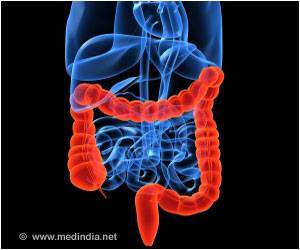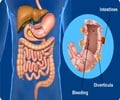Bile acids can burn fat depots stored in the body by converting the energy-storing white fat cells into energy-expending beige fat cells.
Highlights
- A new therapy for treating obesity has been identified
- Bile acids aid in converting fat-storing white cells into fat-burning beige cells
- TGR5 receptor aids in promoting mitochondrial fission and beige remodeling of white fat cells
- Thermogenesis (heat production) is involved in maintaining the body’s temperature in cold environments
Bariatric surgery is well-known among patients and is the only reliable treatment for obese people, though it is expensive and invasive. But, non-invasive treatments such as diets and drugs that reduce intestinal ingestion are not well-known among patients.
What is Bile?
Bile is a yellow-green fluid that is produced in the liver. It is stored in the gallbladder and secreted into the intestines during a meal. Bile acids are essential constituents of bile.
Bile emulsifies dietary fat into tiny globules, and digestive enzymes help in the break down of these globules that can be absorbed by the intestine.
There are about three different types of fat cells such as white fat cells, brown fat cells, and beige fat cells. White fat cells store energy, whereas brown fat cells burn energy, and the "beige" fat cells function like brown cells but are located in white-fat depots.
Recently, beige fat cells have attracted a lot of attention, as adults have very low numbers of active brown adipocytes. But scientists are wondering how a white cell can turn into a beige, a process called "beiging" and shift the balance from fat-storing to fat-burning.
The Schoonjan team revealed that this process could be coordinated by secondary bile acids, which are metabolites generated by the liver and gut bacteria.
In this study, the research team suggested that by activating the bile acid TGR5 receptor with molecules that mimic the action of bile acids, also known as "mimetics." can induce remodeling of white fat cells into beige fat cells.
The bile acids accumulate in the blood and interact with the TGR5 receptor on white fat cells to change their metabolic function.
This shows that it is more than just a change in color. The research team also found that these bile acids can increase the number of mitochondria in the new fat cells, which means higher energy consumption in the new beige fat cells.
Bile-acid Mimetics and Fat Loss
The bile-acid mimetics also trigger lipolysis, which is the first step in fat degradation and allows the fat cells to use fatty acids as their main fuel source.
The study helps in providing a direct connection between bile acids and fat loss, which aids in developing the novel therapeutic intervention in obese people.
"We showed that bile acids are much more than soap for digestion when their concentration in the blood reaches a certain level, it can turn up the thermostat and increase fat burning for energy and heat production," said Kristina Schoonjans.
"What is exciting about our discovery is that low concentrations of TGR5-selective molecules are sufficient to promote the beiging of white fat-storing cells, thereby bypassing the need to increase the total bile acid pool," said Laura Velazquez, first-author of the paper.
Alessia Perino, the co-first author, said that this study also highlights mitochondrial fission or the splitting of mitochondria, an essential mechanism by which bile acids turn white fat into beige fat.
Alessia Perino also said that it would be interesting to explore whether mitochondrial fission is a universal mechanism for beiging in response to other stimuli.
What is Overweight and Obesity?
Overweight and obesity mean that a person's weight is higher than the desired healthy weight for height.
An individual is said to be overweight when the Body Mass Index (BMI) is higher than 25, and a person is said to be obese when the BMI is higher than 30.
Obesity is a threat for not only adults for children and adolescents as well. Childhood obesity is on the rise and has increased more than tenfold in the past four decades.
Worldwide, BMI of children and adolescents has increased by 1.7 for boys and 1.3 for girls.
Obesity and overweight can have a severe impact on health and can lead to cardiovascular diseases, type 2 diabetes, new cancer cases, non-alcoholic liver disease, osteoarthritis, and depression.
Reference
- Laura A. Velazquez-Villegas, Alessia Perino, et al. TGR5 signalling promotes mitochondrial fission and beige remodelling of white adipose tissue. Nature Communications (2018). DOI: 10.1038/s41467-017-02068-0
Source-Medindia
















